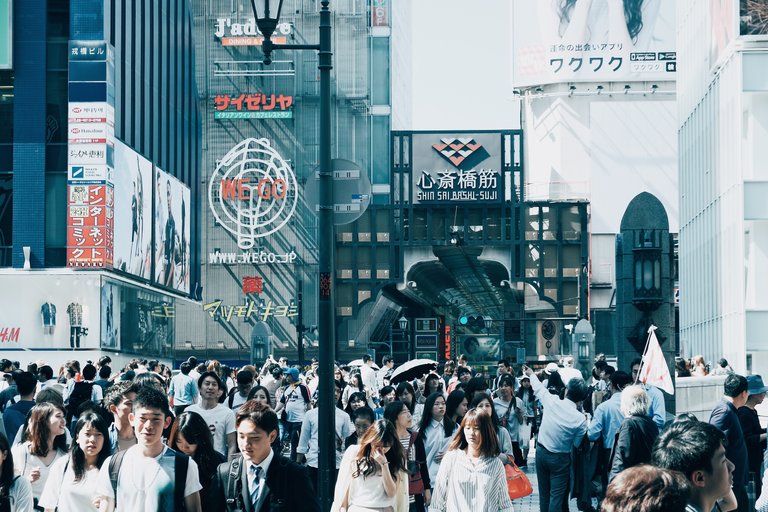We often tend to assume that being around many people is safer. And why not? If something goes wrong and we need help, there are more people around to help you, right? This is found to be faulty thinking and has been proven incorrect by both studies and real-life examples.
A classic example used to illustrate this is the murder of Kitty Genovese. She was murdered outside her building in New York in 1964. Although more than 30 people who were in their apartments nearby heard the attack and the victim's frantic screams, no one came forward to help or even bothered to call the police. The media criticised the witnesses for being 'cold' and 'selfish', but such behaviour can be seen even today. What is the underlying reason for this? 
In fact, you are better off in a lonely neighbourhood with just a few residents than in a crowded area with more. The reason for this is simple: The more the witnesses, the more each assumes that someone else will take responsibility. This is called diffusion of responsibility in Social Psychology. Hence, if only one person is around if, say, you slip and fall on a road, the more likely it will be for them to help you. This is because this person knows fully well that he or she is the ONLY person there and feels the full weight of responsibility.
This phenomenon called the "Bystander Effect" is, of course, more nuanced than this. Responding to an emergency does not merely depend upon number of people there, though it does play an important role. Also important are the relationship among the bystanders. If all of them are strangers, they are less likely to communicate and, hence, less likely to be helpful. But if, say, they are a group of friends, or if it is a small town where most people know each other, you will be more likely to receive help. 
But all of this comes secondary. The precursor to responding is noticing and interpreting a situation as an emergency! If you are so engrossed in whatever you are doing, you can fail to notice that someone needs help. You may be busy with work at home and may fail to notice an assault down the street. Or be listening to music and may fail to see someone trip on the footpath. And even if, say, you do notice it, how do you KNOW FOR SURE that it is in fact an emergency? In the Kitty Genovese case, the witnesses may not have been absolutely sure that a woman was being attacked. What if it was just a couple having a dispute? Or a couple role-playing? What if the person you see "falling down" on the footpath just happened to be picking up something they dropped? The point here is that no one wants to misinterpret a situation as an emergency and make a fool out of themselves. In fact, this is where several witnesses can be an obstacle. In front of others, no one wants to "overreact" and embarrass themselves. In large numbers, there tends to be "pluralistic ignorance". No one really knows or is sure of what is happening, so each person depends upon the other to interpret the situation and when they find that no one is responding, each thinks that it is not a cause for concern.
The extent to which people go to avoid embarrassment can even put their own lives into danger. A study was done where a group of participants were put into a room to fill out a questionnaire. The researchers later pumped smoke into the room. However, none of the participants reacted to this dangerous situation lest they look silly. However, when participants were asked to fill the questionnaire alone in a room, they were much more likely to respond responsibly.
Before actually helping someone, we often assess whether it is in fact OUR responsibility to act. This is why when there is only one person, it is clear that it is his or her duty. Similarly, it becomes a doctor's duty to help someone who is medically injured or an adult to help out a child. Sometimes, an emergency situation may need someone with special skills to help, like in the case of an injury when only a doctor or a medical practitioner can be of assistance. When someone's car breaks down on the road, even if you are willing to help, unless you actually know something about the functioning of cars, you cannot actually help and may only be able to offer to call a mechanic.
The final decision to help is complex and highly nuanced. One must weigh the pros and cons of helping. Helping may even harm the person. Helping someone who is getting attacked can get you attacked yourself. Or it can be a ploy by two attackers who are role-playing to get you, the actual victim, into convenient proximity. Hence, one can never be too sure when emergencies are this serious.
It is quite easy to sit at home and think that people are so selfish for not helping others, but in fact we all are deterred by our paralysing fear of looking like an idiot!
Congratulations @sequeira! You have completed some achievement on Steemit and have been rewarded with new badge(s) :
Click on any badge to view your own Board of Honnor on SteemitBoard.
For more information about SteemitBoard, click here
If you no longer want to receive notifications, reply to this comment with the word
STOPBy upvoting this notification, you can help all Steemit users. Learn how here!
Well written and absolutely makes sense, I wasn't even aware that this is a phenomenon.
Thank you! This is so innate, we don't realise it.
Insightful post, thanks for sharing. This sort of phenomena explains a lot about the current climate.